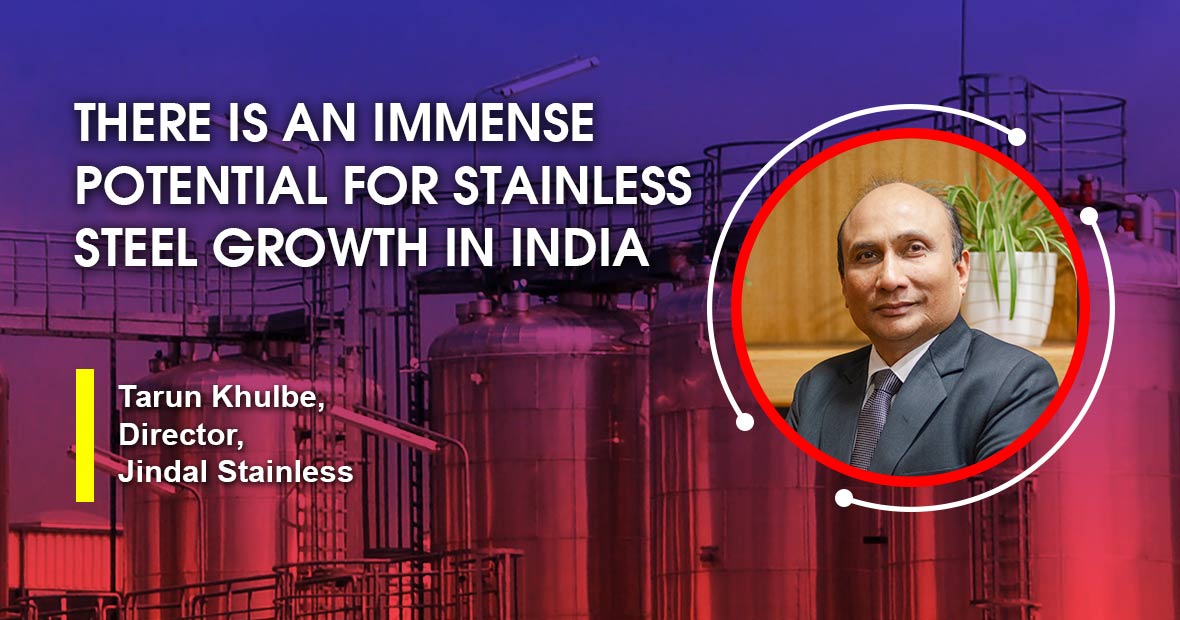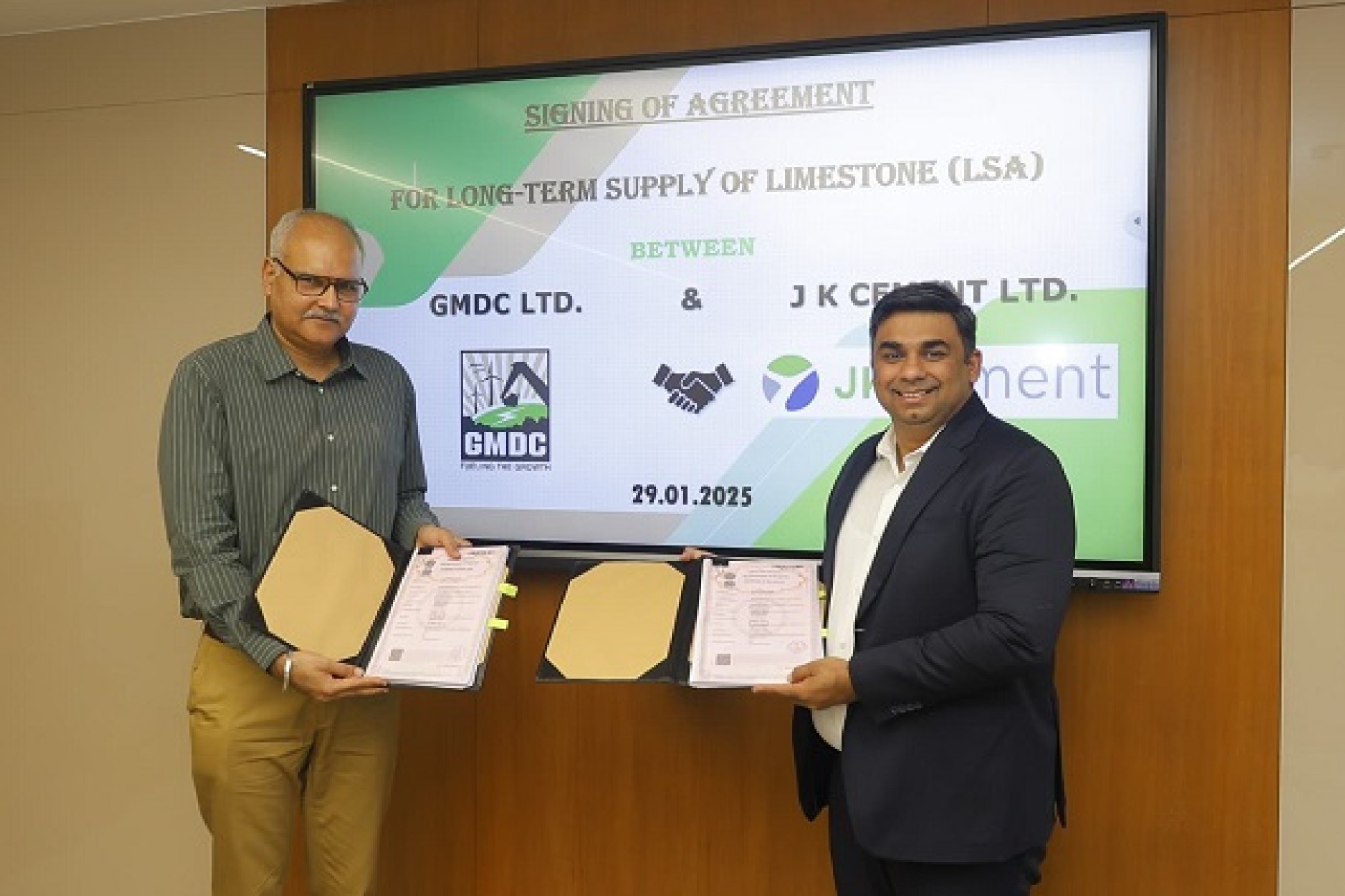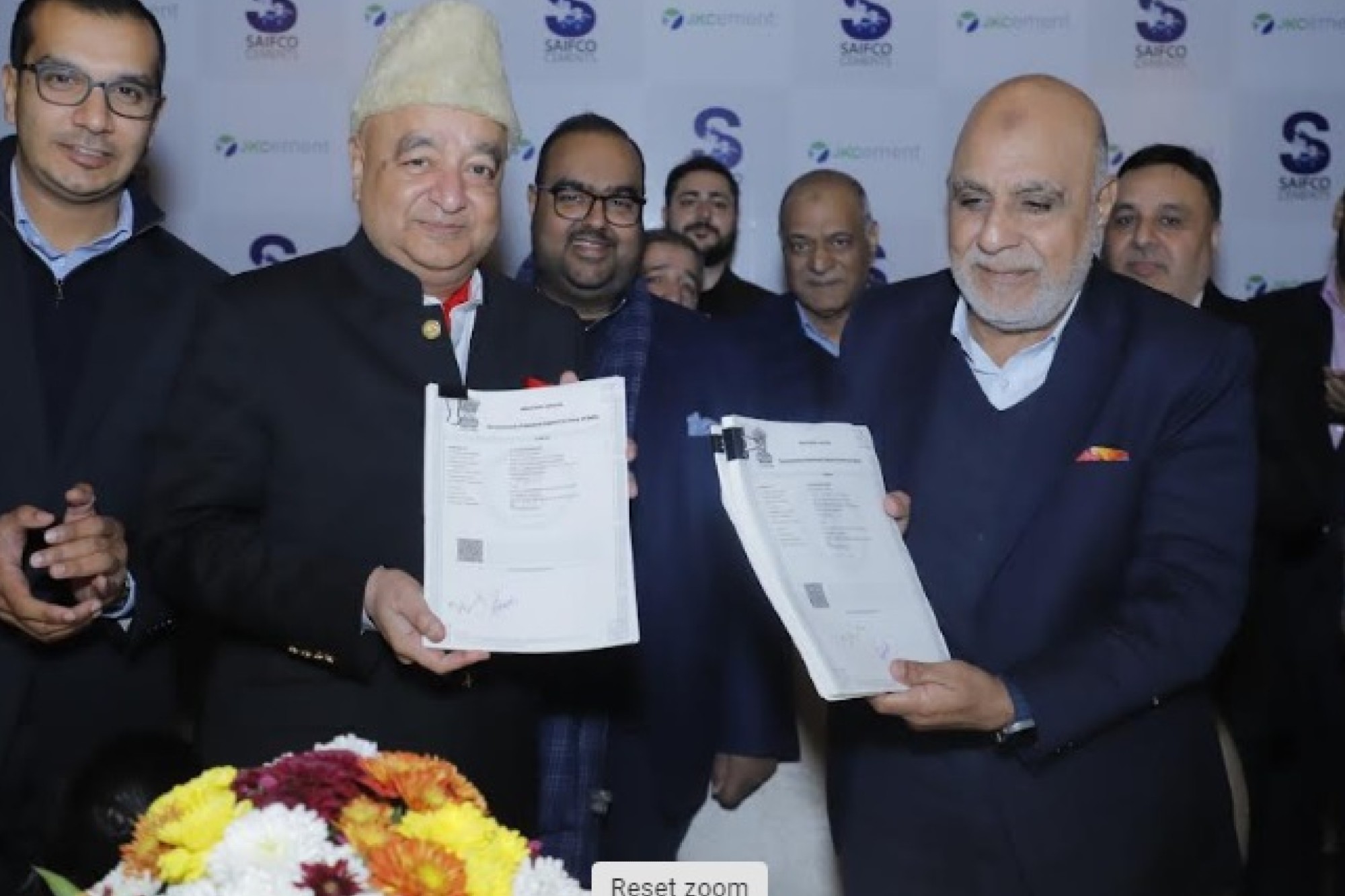There is an immense potential for stainless steel growth in India
By Edit Team | August 7, 2021 3:50 pm SHARE

“Despite pandemic induced shocks, demand for stainless steel recovered in the second half of FY20- 21 and is expected to grow by ~9-10 percent in the current FY while serving a diverse range of applications”, says Tarun Khulbe, Director, Jindal Stainless.
What is the current demand trend of stainless steel in the construction sector?
Stainless steel is a contemporary solution for modern infrastructure. Major demand for stainless steel in the construction sector comes from the decorative pipe and tube category. These are used to develop railings, furniture, ornamental and decorative items, facades, etc. This segment has an annual growth rate of ~12 percent.
Significant growth of stainless steel is expected in the construction segment from the government’s thrust on areas like redevelopment of railway stations, new highways, upcoming metro projects and new airports across Indian cities. As the government has enhanced its spending on civil infrastructure for nation- building, Jindal Stainless has also aligned itself to this goal in the construction segment.
Owing to its structural strength, stainless steel rebars and plates are key components of present-day civil infrastructure, like foot-over-bridges (FOBs) and road-overbridges (ROBs). Jindal Stainless supplies stainless steel for railway infrastructure. The company had signed an MoU with Braithwaite & Co. Limited, a Government of India undertaking under the Ministry of Railways, which undertakes work for the Indian Railways.
Transit building projects such as airport and metro transport systems also use stainless steel for applications like bollards, column cladding, ticketing counters, escalators, elevators, handrails, and station canopies, to name a few. A typical mid-sized metro rail station uses ~30-40 tonnes of stainless steel. India has upcoming metro projects in Agra, Kanpur, Bhopal, Indore, Gorakhpur, Surat, Trivandrum, Nashik etc., in addition to the extension of existing projects in Delhi-NCR. This is likely to generate a huge demand for stainless steel.
Which segments are growth drivers in the current market environment?
Globally, demand for stainless steel is the highest among all other major metals in ferrous and non-ferrous categories. As per the International Stainless Steel Forum (ISSF), stainless steel has recorded a CAGR of 5.33 percent since 1980 and outpaced other metals. India is the second-largest producer and consumer of stainless steel in the world. As per the Indian Stainless Steel Development Association (ISSDA), the apex Indian stainless steel body, India witnessed 8-9 percent CAGR in demand over the last three decades. With a melt production of 3.17 MT in CY2020, India retained its spot as the second- largest stainless steel producer in the world despite the pandemic-induced disruptions.
The per capita consumption of stainless steel in India has seen significant growth in a span of eight years and now stands ~2.5 kg. However, this is much lower than the world average of ~6 kg and exhibits immense potential for stainless steel growth in India.
Despite pandemic-induced shocks, demand for stainless steel recovered in the second half of FY20-21 and is expected to grow by 9-10 percent in the current FY while serving a diverse range of applications. The growth is expected to come from a mix of both, domestic sales and exports. Demand is expected to be triggered by public and private spending on infrastructure, a focus on sustainable infrastructure, and the government’s stimulus for supporting the MSME ecosystem. A combination of these factors is expected to generate a healthy demand for stainless steel.
The domestic industry has adequate capacity and capability to take care of both current and future demand. As the domestic market offers immense growth potential, the domestic industry has made sustained efforts to expand the applications of stainless steel beyond traditional applications. Most of the stainless steel demand, approximately 40 percent, comes from kitchen goods and white goods. Architecture, Building & Construction (ABC), Automobiles, Railway and Transport (ART), and process industries are major consumers of stainless steel in India.
Life Cycle Cost (LCC) as a decisive factor for building sustainable infrastructure has gained immense importance. The infrastructure and construction segment is expected to experience a boost in stainless steel demand as government guidelines have laid emphasis on opting for longterm sustainable solutions. The proposed investments in public infrastructure are further bound to propel demand, with metro rail projects continuing to be one of the many rapidly growing segments. The decorative pipe and tube segment, which is growing at 12 percent annually, is another major source of stainless steel demand in Tier I and II cities. Our Hisar plant is already equipped to supply specialty products like coin blanks, precision strips, and blade steel. We are also a licensed manufacturer and supplier for High Nitrogen Steel (HNS) grade for applications in the defence sector. Through our Hisar plant, we are continuously working to develop and supply special alloys for various strategic applications.
As the pandemic continues to stride, medical and health infrastructure is expected to boost demand for stainless steel as a safe, hygienic, and inert metal. Demand for exports is also expected to be healthy as massive vaccination drives in consuming economies like US and the EU are expected to improve consumer sentiments, thereby opening export opportunities for domestic players.
What are the opportunities for stainless steel sector in terms of indigenisation of products and import substitution?
Jindal Stainless is committed to supporting an ‘Atmanirbhar Bharat’. Traditionally being limited to utensils, stainless steel has emerged as a cost-effective and sustainable alternative across all industries. Import substitution in stainless steel has been a continuous process. The domestic stainless steel industry is presently catering to domestic demand from architecture, automobiles, railways, coinage, process industries, and white goods and hollowware sectors. Domestic industry has identified opportunities in special grade (duplex, super austenitic) segments, mainly for equipment manufacturers in the nuclear, pulp & paper, and petrochemical industries that have scope for import substitution.
Jindal Stainless has been working with several Original Equipment Manufacturers (OEMs) in the auto segment. With our in-house R&D efforts, we have been able to indigenise various auto grades for two-wheelers and passenger vehicle segments that were earlier imported. The company has successfully developed and commenced commercial supplies for new stainless steel grades like 436, 439, 441, which are required for the BS-VIcompliant automobile exhaust systems. Further, we are now focusing on import substitution and addition of new grades like 316F, high machinability grades for pulp & paper industry, development and supplies of acid dew point corrosionresistant stainless steel grades like SS 317LMN for flue gas desulphurisation projects in power plants, and low cobalt stainless steel for nuclear plants. We are also working towards indigenising development of high aluminium (>4 percent) ferritic stainless steels for high temperature applications.
Jindal Stainless has invested significantly in R&D and developed a new ballistic/ blast-protective stainless steel grade – High Nitrogen Stainless Steel (HNS) for the defence sector. The use of HNS in ballistic applications will allow lowweight and maintenance-free systems and subsystems for the Indian Army. HNS is being used as import substitution for mine trawl applications and also has potential application in all armored vehicles, aviation, and naval systems. Jindal Stainless has developed indigenised special steel for critical components such as rocket canisters, rocket motor casings, suspensions, pressure vessels, etc. The company has also indigenised the super duplex grade for naval applications and supplied ring forgings/plates of this grade for submarine rocket launchers against the stringent requirement of Defence Research and Development Organisation (DRDO).
Cookie Consent
We use cookies to personalize your experience. By continuing to visit this website you agree to our Terms & Conditions, Privacy Policy and Cookie Policy.



















